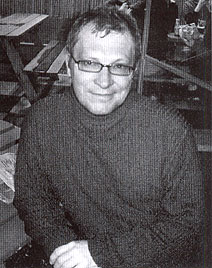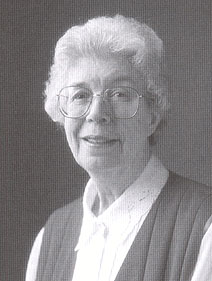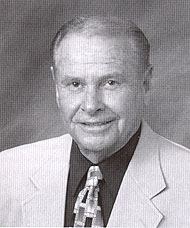Homuncli, Golems, and Artificial Life
By Gary Lachman
Originally printed in the JANUARY-FEBRUARY 2006 issue of Quest magazine.
Citation: Lachman, Gary. "Homunculi, Golems, and Artificial Life." Quest 94.1 (JANUARY-FEBRUARY 2006):7-10.

The Kabbalah, for example, includes legends and stories about the alchemical homunculus, or "little man," and the golem, a kind of proto–Frankenstein's monster. In both cases the idea is that through certain secret magical practices, human beings can share in the creative power of God. To the orthodox believers of both Judaism and Christianity such a notion is considered blasphemous and betrays either the hubris of humanity or the work of the devil. How much the orthodox misunderstanding and rejection of these ideas helped to distort them is unclear, and space and time prevent me from exploring this question. Although ostensibly concerned with very similar objectives—the creation of an "artificial man"—the alchemical homunculus and the kabbalistic golem are quite different. The popular understanding of these esoteric themes has for the most part focused on a literal interpretation, and their resurgence in our contemporary consciousness threatens to take that literalism seriously.
Prior to the rise of science and the mechanical vision of human life and the universe, the idea of creating human simulacra had a strong organic foundation. The homunculus was something one grew; the popular belief was that homunculi could be grown from the mandrake root, whose shape lent itself to anthropomorphic speculation. The golem, too, although not quite as organic as the homunculus, was nevertheless not pieced together bit by bit, as Mary Shelley's monster would be; it was fashioned, molded from clay or soil and then miraculously brought to life.
To be sure, the prescientific age had mechanical marvels as well. Hero of Alexandria in the second century wrote manuals on how to construct moving god images and other automated devices. Using steam and sand, Hero was able to animate singing mechanical birds, to rotate statues, and to power a miniature puppet theater. There is evidence that such mechanical wonders were used as much for entertainment as for religious purposes. And we also know that animated statues played an important part in the religious rites of the NeoPlatonic schools of late antiquity, a practice that resurfaced in the folk traditions of the Middle Ages. Pope Sylvester II was said to have consulted a mechanical "talking head," and the same was said of the monk Roger Bacon and the Dominican friar and natural philosopher Albertus Magnus.
As Victoria Nelson shows in her fascinating book The Secret Life of Puppets, this tradition of animated god images carried on in the popular fascination with puppets. The ancients, however, didn't view their animated images as human simulacra but more as a kind of magical magnet used to attract divine energies. To animate a god image was to perform theurgy, to create the god, to bring the god to physical manifestation. For ancients like the philosophers Plotinus, Proclus, Porphyry, and Iamblichus, this meant drawing down the god-force that resided in the stars and embodying it in the image of the god. Although this was a form of "giving life" to inanimate objects, it was concerned not with creating humans but with making the divine present.
The question arises then: What is the homunculus and what is the golem? Franz Hartmann's 1896 Life of Paracelsus defines homunculi as "artificially made human beings, generated from the sperm without the assistance of the female organism (black magic.)" The Swiss alchemist Theophrastus Bombast von Hohenheim, otherwise known as Paracelsus (1493–1541), is recognized by many as an early master of holistic medicine and natural healing. It was from Paracelsus that Goethe, a great reader of alchemical and occult literature, got the idea of the homunculus which he used in the second part of Faust. Paracelsus offered a complete recipe for creating a homunculus:
If the sperma, enclosed in a hermetically sealed glass, is buried in horse manure for forty days, and properly magnetized, it begins to live and move. After such a time it bears the form and resemblance of a human being, but it will be transparent and without a body. If it is now artificially fed with the Arcanum sanguinis hominis until it is about forty weeks old, and if allowed to remain during that time in horse manure in a continually equal temperature, it will grow into a human child, with all its members developed like any other child, such as could be born by a woman; only it will be much smaller. We call such a being a homunculus, and it may be raised and educated like any other child, until it grows older and obtains reason and intellect, and is able to take care of itself.
Hartmann notes that Paracelsus has been taken to task for believing in the literal creation of such a being, but in Paracelsus's defense, he offers a story purporting to give evidence for the reality of such things. It's easy to assume that Paracelsus was taken in by the common, literal understanding of what the homunculus is. But there's also the possibility that Paracelsus was aware of this understanding and used the superstition to communicate secret teachings. References to the need to bury the sperm in horse manure, to keep it there for forty days, and to feed it with the Arcanum sanguinis hominis, the "secret blood of man," suggest that Paracelsus may have been making reference to mythic rather than literal ideas.
Ronald D. Gray, in his book Goethe the Alchemist, argues that there's a great deal of evidence showing that the homunculus was one of many names used by the alchemists to designate the secret aim of the alchemical Great Work. To most of us, alchemy is a primitive forerunner of chemistry, and if we know anything about alchemy it's that it was concerned with turning lead into gold. Many calling themselves alchemists convinced themselves and many others that this was indeed the aim of the Royal Art and that it was possible. Many sought the secrets of alchemy out of sheer greed, and many would-be alchemists found a comfortable niche or, perhaps more often, an undesirable end, in the employ of a king or queen.
But there's another way to read the alchemical project, and that is that the transformation had more to do with the alchemists themselves than with a lump of metal. Turning lead into gold was a symbolic way of describing the true aim of alchemy: the spiritual transformation of the alchemist. If one takes the time to read the alchemical literature, it's easy to come away feeling absolutely muddled. Strange creatures, impossible landscapes, paradoxes, and downright illogic seem to dominate; the closest thing to any modern is the writings and art of the surrealists, who, ironically, looked to the alchemists for inspiration or interpretation of dreams.
It is in the psychological literature of the last half century, especially in the Jungian school, that we find great correspondence with alchemical thought. The true goal of the alchemists, the real aim of all the preparation and cumbersome apparatus, was to unite their earthly, mortal soul with that of the Creator, to participate in the divine, to reawaken their spiritual consciousness, and to grasp the secret forces at work behind the natural world. In this the alchemists carried on the same work as their Neoplatonic forebears.
Success in this work depended on following the proper procedures, which included astrological concerns, exemplifying the alchemist's belief that the cosmos was a unified whole and that each part of it embodied the divine force animating everything. For the alchemist, matter was not the dead, inert stuff it is for us: it was a living body, one that could respond to a person's attention. As the alchemists transformed the matter in their alembic through the alchemical process, their own inner world experienced similar changes. The entire process centered on the idea of rebirth. The alchemists were to "die" in a sense—to lose their earthly, mortal being—and, if the procedure was successful, would be reborn.
Death was an essential aspect of the alchemical process; it was out of death that new life could emerge, as it did in the Frankenstein's monster. In Paracelsus's recipe for the homunculus, the horse manure represents the putrefaction needed to begin the process of rebirth. This is the first step in the alchemical work. The old self, the old Adam, must be broken down until we arrive at the prima materia, the primordial stuff, the unformed matter out of which any future creation can take place. The forty days in which the sperma is buried in the horse manure parallel Christ's forty days in the desert, when he is tempted by Satan. This means that the alchemist must undergo trials, must endure some suffering, and that the alchemical process is not something going on outside of oneself but is something that must be lived through. This is also suggested in the idea that the homunculus, the little man who is the alchemist reborn, must be fed by the alchemist's own secret blood. The alchemist's attention, concentration, mind, or soul must be completely focused on the task variously known as the creation or discovery of the philosopher's stone, the elixir of life, potable gold, the universal solvent, and, very often, the creation of the homunculus depicted in numerous alchemical illustrations, often as the god Mercury encased in the alchemical vessel.
That the alchemists would speak of this in parable, allegory, and obscure language shouldn't be surprising. It's difficult enough for us, who have the advantage of familiarity with self-help and psychotherapeutic literature, to grasp the meaning of rebirth. For the literal-minded of the Middle Ages, who were taught that all magic and occult knowledge was the work of the devil, this would be a subtle notion indeed. The idea that by going through the alchemical rebirth, one would become as Christ—regenerated—would strike them as blasphemous. What was left was the literal idea of making an actual man or woman, just like the idea of making actual gold from lead or finding an actual stone. Yet a famous alchemical maxim reads: "Our gold is not the vulgar gold." Clearly, making material gold was not what they were after. Creating an actual tiny human being was always recognized as a display of power that went beyond nature. This is a dim and distorted echo of the alchemists' belief that their art was against nature in the sense that it both sped up a natural process and redeemed its practitioners from a life lived solely at the natural, Adamic, unregenerate level.
The legend of the golem has also suffered from a too-literal interpretation. Probably the most well known version of the golem story is Gustav Meyrink's classic expressionistic novel The Golem, published in 1915. Several film versions of the golem story have been made; the best-known is probably Paul Wegener's 1920 version. In the first film to deal with the theme, Otto Rippert's 1916 Homunculus, a scientist creates an artificial man and endows him with more than human powers. When this superman discovers his true origin—that he is not human at all and can never feel love—he reacts violently and inaugurates a reign of terror that leads to his destruction. This notion of a lack, of something missing, also haunts homunculi in future storytelling.
The popular idea of the golem had its start in the 1890s, when the creature became associated with the legends surrounding the famous Rabbi Loew of Prague, an almost mythic figure of the sixteenth century. In one version, Rabbi Loew creates the golem to protect the Jewish population of Prague from one of Emperor Rudolph II's pogroms. Prague is perhaps the most occult and alchemical city in Europe; aside from the golem legends, it has a long tradition of puppets, dolls, and magic shows of various kinds.
Although the popular idea of the golem is associated with the magical powers of Rabbi Loew—and there is no evidence that the rabbi himself ever attempted to make a golem—the term has a long. if obscure history in Talmudic literature. The word golem is mentioned once in the Bible, in Psalm 139; today it's often translated as "embryo." Golem itself means "unformed"; it's the hyle of the ancients, the chaotic, inchoate state of matter before it is given form by the Creator. The similarity between this and the alchemical prima materia seems clear. In the Talmudic Aggadah, Adam is referred to as "golem." In a midrash from the second and third centuries, Adam is described as a kind of cosmic golem, an immense being whose body is as large as the universe and who can see the entire history of the world, its past and future—an echo of Madame Blavatsky's akashic record.
This description relates to the kabbalistic idea, also shared by hermetic, alchemical, and Gnostic beliefs, that the universe itself is a kind of man, Adam Kadmon, and that each of us is a microcosm, a universe in miniature: the universe is a Great Man, and we are all little universes. There is a story that when God was creating the world, he made Adam first but left him unfinished, in a golem state, fearing that if he completed him and then went on to create the universe, Adam himself might get the credit for the work (which implies something about the character of the Creator). So God left Adam unfinished, and only after creating the world did he breathe life into him. One symbolic interpretation of this story, which relates to the alchemical "little man," is that we all are golems until the breath of the divine enters us. We are all unfinished, incomplete, until regenerated.
The kabbalist scholar Gershom Scholem tells us that "the golem is a creature, particularly a human being, made in an artificial way by virtue of a magic act, through the use of holy names." In kabbalistic tradition, the golem, like Adam, is made of clay or soil. He is molded into human form, and then the mystical name of God, the Tetragrammaton, JHVH, is written on a piece of paper and placed on his mouth. The motif of a magical word or name shows the importance of writing and language in the Jewish mystical tradition. Kabbalah itself is a mystical interpretation of the Bible, and the interplay of words, their rearrangement into other words, and their numerical values all play an important role in understanding the secret laws behind creation. Whereas in the alchemical idea of the homunculus the alchemist himself is re-created, here the kabbalist echoes God's creative power and creates a kind of life himself.
There is some practical value in this, in that the golem is often used as a kind of slave or worker who, takes care of many otherwise onerous tasks, similar to the modern robot or android. The golem, however, is a kind of sorcerer's apprentice, and, as in the Frankenstein tale, the monster gets out of hand. In many versions, the golem continues to grow and grow and soon becomes too big for the magician to handle.
There are different versions about how the golem is stopped. In the most popular one, the word emeth, "truth," is written on the golem's forehead, and this gives it life. In order to stop it from destroying the ghetto, the magician rubs out the first letter of the word, leaving meth, which means "death." The man of clay then tumbles to the ground and shatters. In Gustav Meyrink's novel the golem, a metaphor of the novelist's true self, is brought to light through the act of writing. In one of the many film versions, the golem falls in love with the magician's daughter and, like the homunculus, turns violent and has to be destroyed. Gershom Scholem points out that, in keeping with kabbalistic tradition, the golem always lacks some essential quality. In some versions it lacks the power to speak, emphasizing that the magical power of words is reserved for God and his devout believers. In others it lacks intelligence or some other positive human quality. All golem stories, however, portray the golem, no matter how strong, as less than fully human. The imperfection of their creature shows that the magicians, no matter how knowledgeable, are still far short of God, a point that contemporary advocates of "man-made humans" may wish to ponder.
Gary Lachman is the author of In Search of P.D. Ouspensky: The Genius in the Shadow of Gurdjieff (Quest Books, 2004). His most recent book is A Dark Muse (Thunder's Mouth Press, 2005). He is currently writing a book about Rudolf Steiner, to be published in 2007.


 Beatrice Lane Suzuki was the American wife of D. T. Suzuki, the well-known philosopher, Buddhist scholar, and Zen popularizer in the West. Her name is familiar to few Theosophists, yet she played an important role in Japanese Theosophy.
Beatrice Lane Suzuki was the American wife of D. T. Suzuki, the well-known philosopher, Buddhist scholar, and Zen popularizer in the West. Her name is familiar to few Theosophists, yet she played an important role in Japanese Theosophy. In the volatile region of the Middle East, what strange circumstance could result in a person of the Muslim faith being the gatekeeper for the Church of the Holy Sepulcher in Jerusalem, one of the holiest shrines in all of Christendom? Once again, we find that truth is stranger than fiction. Several years ago, the Associated Press told the story of Wajeeh Nuseibeh whose family has monitored those massive doors for more than a thousand years due to sectarian squabbling among the Christians.
In the volatile region of the Middle East, what strange circumstance could result in a person of the Muslim faith being the gatekeeper for the Church of the Holy Sepulcher in Jerusalem, one of the holiest shrines in all of Christendom? Once again, we find that truth is stranger than fiction. Several years ago, the Associated Press told the story of Wajeeh Nuseibeh whose family has monitored those massive doors for more than a thousand years due to sectarian squabbling among the Christians. Immanuel Kant, German Philosopher (1724-1804) and Professor of Philosophy at the University of Koneisberg, was a key figure in the period referred to as the German Enlightenment. In addition to his philosophical treatises, Kant wrote extensively on the theory of the heavens, origins of the planetary systems, effects of the tides upon the earth's rotation, causes of earthquakes, volcanoes on the moon, and other subjects. His treatise on eternal peace formed the basis for the United Nations Charter. Although he was raised Lutheran, he rejected conventional doctrine early in life and regarded independent spiritual integrity as the highest form of morality. In contrast to his brilliant intellect and Prussian rigidity, Kant confessed to moments of passive contemplation and listened to the music of the spheres on numerous occasions.
Immanuel Kant, German Philosopher (1724-1804) and Professor of Philosophy at the University of Koneisberg, was a key figure in the period referred to as the German Enlightenment. In addition to his philosophical treatises, Kant wrote extensively on the theory of the heavens, origins of the planetary systems, effects of the tides upon the earth's rotation, causes of earthquakes, volcanoes on the moon, and other subjects. His treatise on eternal peace formed the basis for the United Nations Charter. Although he was raised Lutheran, he rejected conventional doctrine early in life and regarded independent spiritual integrity as the highest form of morality. In contrast to his brilliant intellect and Prussian rigidity, Kant confessed to moments of passive contemplation and listened to the music of the spheres on numerous occasions.